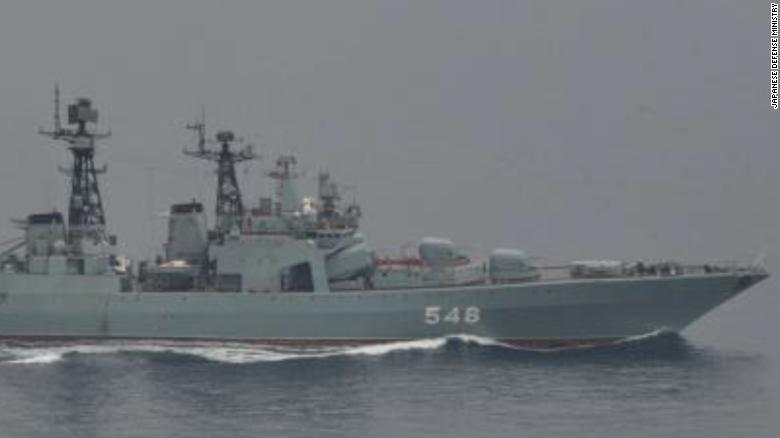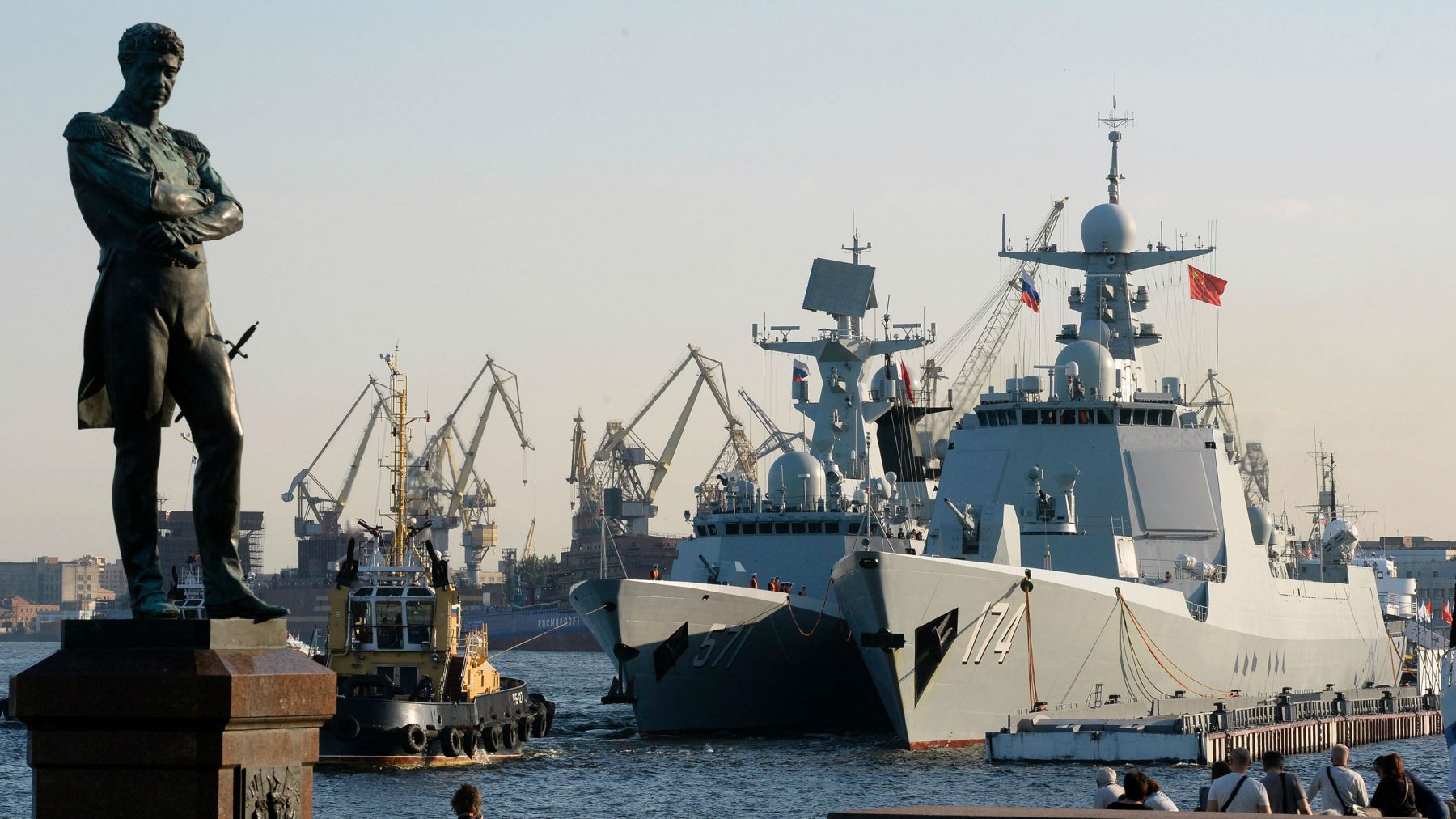in the last few days. There is a hint of increasing tensions between the two countries as ties worsen over Ukraine and Taiwan.
Russian and Chinese warships have been observed near Japan at least eight times in the last few days. There is a hint of increasing tensions between the two countries as ties worsen over Ukraine and Taiwan.
Five Russian warships, including an anti-submarine destroyer, have been spotted near the Tsushima Strait, which divides Japan and South Korea, according to Japan’s Defence Ministry on Tuesday.
According to a press release from the ministry, the Russian flotilla of five ships has been near the Japanese islands of Hokkaido in the north and Okinawa in the south for the past week.
A supply ship was also seen in the Izu Islands on Tuesday, some 500 kilometres (310 miles) south of Tokyo, with two Chinese warships nearby. The Lhasa, a Type 55 guided-missile destroyer and one of China’s most formidable surface ships, was one of the ships spotted.
It was reported by the government that as of June 12th; the gang had been operating in waters near Japan.
The Japanese Defence Ministry has issued a photograph showing the Russian Navy ship Admiral Panteleyev.

Analysis
Professor James Brown of political science at Temple University in Tokyo observed, “This is an evident display of power from both Russia and China.”
“Japan is quite concerned about these efforts. The Japanese Self-Defence Soldiers are stretched thin, trying to keep tabs on the movements of Russian and Chinese forces.”
Last October, ten Russian and Chinese warships took part in joint drills that circumnavigated most of the Japanese archipelago. There was no assertion from Tokyo that the Russian and Chinese naval units were coordinating their operations this time around.
The Chinese and Russian air forces conducted joint strategic air patrols over the Sea of Japan, the East China Sea, and the western Pacific Ocean in what the Chinese Defence Ministry called part of an annual military cooperation plan as Japanese Prime Minister Fumio Kishida hosted a summit of the leaders of the United States, Australia, and India in Tokyo.
That meeting was only one reason Beijing wanted to convey its anger to Tokyo, according to Brown.
Beijing was enraged by Japanese pronouncements about Taiwan’s security, which the Chinese Communist Party deems a local affair, according to Brown.
In reality, President Joe Biden stated at the Tokyo conference that the United States would intervene militarily if China attempted to take Taiwan by force. The White House eventually took back that statement, but the United States still maintains a substantial military presence in Japan, forces that might be called upon in the event of a confrontation over Taiwan.
Over 70 years ago, the defeated Nationalists fled to the Taiwan island and established a separate government for China.
Despite the fact that China has never governed the island, the country’s Communist Party maintains that it is a part of its territory.
A confrontation between China and Japan over the Taiwan Strait is seen as a danger to both countries’ security.
Vladimir Putin has taken issue with Tokyo’s backing for Ukraine since the Russian invasion of Ukraine about four months ago, according to Brown. That backing has included sanctions against Russia and the expulsion of Russian officials.
Vladimir Putin hopes that if he can terrify Japan with the use of military force, this will dissuade Tokyo from enforcing more sanctions against Russia.
Brown referred to this week’s naval manoeuvres by Russia and China as a “silver lining” for Tokyo since they seemed to be uncoordinated.
The alliance between Russia and China is Japan’s “strategic nightmare,” he added.
Works at The Truth International Magazine. My area of interest includes international relations, peace & conflict studies, qualitative & quantitative research in social sciences, and world politics. Reach@ [email protected]










